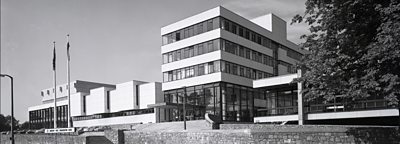On 13 February 1923 at 5pm, ���˿��� broadcasting in Wales began when the British Broadcasting Company (as it then was) opened its Cardiff station. Soon after, in December 1924, the company opened a station in Swansea. In 1927 the company became the British Broadcasting Corporation and within three years, the Welsh stations were part of what was known as the ‘West Region’.
In the 1930s, many in Wales wanted to see a separate Welsh Region, providing programmes in both English and Welsh languages for the Welsh audience. After a lengthy campaign, the transmitter in Penmon was opened in February 1937, signalling the beginning of the Welsh Region and Sir John Reith, the director general of the ���˿���, visited Cardiff for the Region’s inauguration ceremony in July that year.
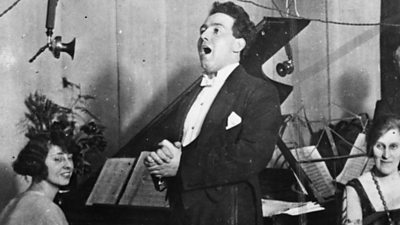
During the war, the ���˿���’s regional services were effectively shut down, but the ���˿���’s studios in Bangor played host to the Corporation’s variety department between October 1940 and August 1943. As a result it was not unusual to see stars such as Tommy Handley and Arthur Askey wandering the streets of the city!
In the post-war years, as it became clear that television would become the dominant medium for informing, educating and entertaining, increasing demands were made for Wales to have its own television service. The government appointed a committee to consider the future of broadcasting in the UK in 1960 and this proved to be the turning point in terms of broadcasting in Wales.
Many people were worried about the impact that television might have on the Welsh language, culture and way of life. Here’s what the Welsh youth movement, Urdd Gobaith Cymru, had to say on the matter: ‘It is surely obvious that the one and only solution is to treat Wales as an entity, to divorce her from other regions and to give her the respect a nation deserves. This means a separate television service adequately covering the entire country, providing programmes of all kinds in both Welsh and English at convenient viewing times’.
Not everyone agreed however! In January 1962, a Mr J. E. Roberts from Penygroes near Caernarfon, wrote to the Western Mail to reiterate the point that north Wales was closely aligned with the north west of England. ‘Advocates of an all-Welsh TV are a real menace’ he argued. He went on: ‘It is things such as this that make us in north Wales hope and pray that we shall never come under any system of all-Wales TV. It would be ruinous. For the north of England regional news interests us exceedingly, but the south Wales news not at all.’
When the committee’s report was published in July 1962, one of the most important statements from the viewpoint of the future development of Welsh television was that ‘the first priority should be given to separating the ���˿���’s service to Wales from that to the English regions…’ The way was therefore paved for the establishment of ���˿��� Cymru Wales in 1964.
1960s
���˿��� Cymru Wales was launched on 9 February 1964. It was preceded by a major promotional campaign encouraging viewers to view the new television service, including short bursts of music announcing that ‘Wales gets its very own TV service in 1964!’ and a great little film telling people how to adjust their sets to receive the new service.
Providing 12 hours of programming a week (five hours of English and seven hours of Welsh) the new service worked on the basis of opting out of the UK network at convenient viewing hours rather than having to transmit programmes when the UK network was ‘down’ as had been done in the past. This meant that Welsh-speaking viewers, for example, no longer had to watch programmes on Sunday lunchtimes or late in the evenings.
The new service soon established itself as a key part of Welsh television viewers’ lives. This was achieved in a number of ways, not least by the daily news programmes, Wales Today and Heddiw. Current affairs programmes such as Week In Week Out and Cywain also provided a place for discussing Welsh affairs. This was particularly important given the political changes at the time. In October 1964, the Labour Government appointed the Llanelli MP, Jim Griffiths, as the first Secretary of State for Wales. This, together with the establishment of the Welsh Office, heightened discussion of Welsh politics both within and without Wales and ���˿��� Wales’s news and current affairs programmes were ready to provide a forum for that discussion and debate.
The news service was put to the test in October 1966 at the time of the Aberfan tip disaster. Reporters such as Brian Hoey were on the scene interviewing eye witnesses and covering the tragic events. As one reporter on the scene put it, ‘It was the day that news came of age in Wales’.
In autumn 1966, ���˿��� Wales moved into its new headquarters in Llandaff and the building was officially opened on St David’s Day 1967 by Princess Margaret. Up until this point, various buildings in and around Cardiff had been used to produce Wales’s output but now a new Broadcasting House pulled most of the Corporation’s Welsh activity under one roof.
The decade ended with one of the largest outside broadcasts for ���˿��� Wales, the investiture of the Prince of Wales in Caernarfon Castle on 1 July 1969. Narrated by Richard Baker and Emlyn Williams, the programme gained worldwide audience of over 500 million people.
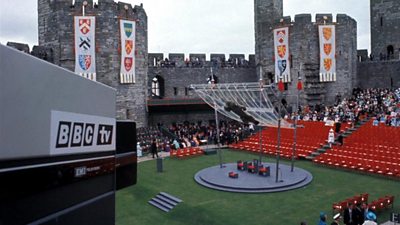
1970s
The 1970s are seen by some as a ‘quiet’ period in the history of television – an era where nothing much happened. In Wales, however, the broadcasting landscape was far more turbulent. The 1970s witnessed increased activity on the part of cultural and political nationalist groups such as Cymdeithas yr Iaith Gymraeg (the Welsh Language Society) and Plaid Cymru (the Welsh Nationalist Party). Calls increased for a completely separate Welsh language television service and resulted in recommendations to establish a fourth channel in Wales ahead of the rest of the UK.
1970 saw colour on ���˿��� Wales television programmes for the first time when a report from the Llangollen International Eisteddfod in July that year was broadcast. For many, the 1970s was the ‘golden age’ of television and there’s no doubt that ���˿��� Wales played a part in this. In television comedy, Ryan Davies and Ronnie Williams entertained audiences both in Wales and on the ���˿��� One network. Their unique, homely and popular comedy talents earned them the nickname of the ‘Morecambe and Wise’ of Wales, but they were geniuses in their own rights.
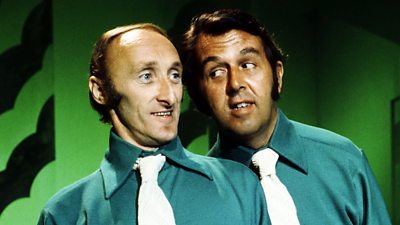
Television drama from ���˿��� Wales also blossomed during the seventies. In October 1974, the ���˿���’s longest-running (and UK’s second longest-running) soap opera, Pobol y Cwm was launched. The brainchild of ���˿��� Wales’s head of drama, John Hefin, it immediately became a hit and, forty years later, is still topping the ratings. Hefin, together with Gwenlyn Parry, also wrote and directed one of the most iconic films to emerge from ���˿��� Wales in the decade – Grand Slam. A humorous, often bawdy, tale of a rugby trip to Paris starring Dewi ‘Pws’ Morris, Hugh Griffith and Windsor Davies, the film was shown on the UK network and for many crystallises the Welsh rugby culture of the period.
The seventies also saw an important development in ���˿��� Wales’s radio service. For many years, the region had been contributing to the output of ���˿��� network radio, in particular the ���˿��� Service and, from 1967 onwards when the ���˿���’s radio service was reorganised, Radio 4. In 1977, opt-outs from Radio 4 were permitted and the following year saw the launch of two national radio stations – ���˿��� Radio Wales and ���˿��� Radio Cymru. Both services soon made an impact and are now a central part of the broadcasting landscape of Wales.
1980s
The early part of the eighties in Wales was dominated to large degree by the establishment of the Welsh Fourth Channel, Sianel Pedwar Cymru (S4C). The ���˿��� had been part of the discussion in establishing the channel from the outset and under the terms of the 1980 Broadcasting Act was now required to produce around 10-11 hours of programming per week to the new channel. Given that around 6-7 hours of Welsh language programming per week had been produced up until this point, this was a considerable increase for ���˿��� Wales.
The programmes accounted for around half of the total output of the channel, the remaining programmes coming from the ITV broadcaster for Wales, HTV, and the infant independent production sector. The ���˿���’s programming consisted mainly of news (in the form of the nightly 7 o’clock news, Newyddion 7) and the long-running soap opera, Pobol y Cwm. The producers of the ever-popular soap opera took a bold step in September 1988 by being the first UK soap opera to be broadcast daily, and in 1994 it was shown on network television with English subtitles for a short, experimental period.
Of course, this change in the pattern of television of Wales meant that ���˿��� Cymru Wales now broadcast English-language programming only on its television service for Wales, a fact which was a relief to many non-Welsh language speakers who had, for a number of years, complained of having to watch programmes in a language that they didn’t understand!
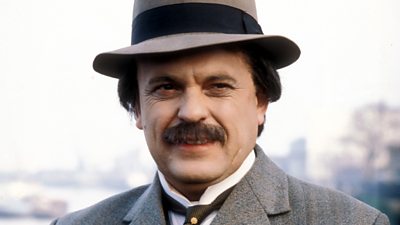
One of the biggest English-language achievements of the eighties came early on in the decade when ���˿��� Wales produced The Life and Times of David Lloyd George. Written by the inimitable Elaine Morgan and directed by John Hefin, the series was shown across the UK on the ���˿��� One network and received critical acclaim. Other networked series followed such as an adaptation of Alun Richards’ novel Ennal’s Point starring Philip Madoc in 1982 and The District Nurse starring Nerys Hughes in 1984.
The Miners’ Strike of 1984-5 presented a challenge to ���˿��� Wales – as it did to the rest of the corporation - as it tried to steer a course through the often complex and emotive debates. In doing so, it underlined the importance of the role of a national broadcaster to provide a space for working through what was, for south Wales in particular, a tense and tumultuous time.
The decade ended with another shift in the broadcasting landscape and with digital television on the horizon, things were about to get very competitive.
1990s
The 1990s can be summarised as a decade of major change in the broadcasting industry in the UK. Competition from a deregulated commercial television sector together with the advent and growth of satellite television provider Sky meant that the ���˿��� had to adapt to the changing environment. As the number of channels increased and a truly multi-channel television era came into being, the challenge for ���˿��� Wales was to maintain its position as a public service broadcaster with a clear remit to reflect Wales to itself and to project Wales into an increasingly crowded television landscape.
While television was becoming increasingly globalised during the decade, the interesting trend in the late 1990s was the move towards devolution in political terms. There was increasing frustration among many that voices from the constituent nations of the UK were not necessarily heard on the UK network. Menna Richards, a former ���˿��� Wales Controller, has discussed the issues of conflicting priorities – produce for the home audience or make a mark on the UK network. Her suggestion is that, in fact, there is no conflict; the broadcaster needs to address both. Although ���˿��� Wales attempted to do this, Welsh productions on the ���˿��� network were few and far between in the nineties.
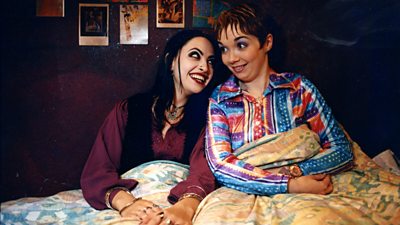
In Wales, the ���˿��� launched a number of English-language drama series. Two of them, Satellite City and Belonging, won critical acclaim from the Welsh audience. The advent of the National Assembly for Wales in 1999 meant that ���˿��� Wales had to reflect a major shift on the political landscape of the nation. Devolution resulted in increased programming from the nations of the UK and the ���˿��� invested heavily in programming from Wales and guaranteed a place on the UK network for programmes in the areas of drama, music and factual programming.
���˿��� Wales also increased its presence on the web by launching its own web pages in 1997 and paved the way for further digital developments in the new millennium. A statement from the ���˿��� Wales website in 1998 stated:
���˿��� Cymru Wales is the only broadcaster producing services in English and Welsh for radio, TV and online, reflecting Welsh life and talents in all their variety in programmes designed specifically for audiences in Wales.
2000s
The decade saw ���˿��� Wales enter into the new digital world in a big way. Having been part of the ���˿��� Choice launch in 1998 with a Welsh regional variation, ���˿��� Wales launched its own digital channel, ���˿���2W, in 2001. Opting out of the ���˿��� TWO network during the evening, the channel provided English-language programming about Wales on a range of topics. When Wales became the first nation in the UK to go fully digital in 2010, ���˿��� Wales was at the vanguard. Major series such as Coal House in 2007 proved how successful a multi-platform programme could be, allowing the audience to interact with the series after transmission.
Perhaps the first of these is the area in which ���˿��� Wales has made the most impact. Doctor Who was re-launched by ���˿��� Cymru Wales in 2005, not having been on British television screens since 1989. Under the watchful eye of executive producers Russell T Davies and ���˿��� Wales Head of Drama, Julie Gardner, the series returned and became an immediate hit. Other flagship network series such as Torchwood, Merlin, Atlantis and Casualty are all produced in Cardiff bear the ‘stamp’ of ���˿��� Cymru Wales at the end of the credits. The recent developments in and around Roath Lock are testament to the commitment of ���˿��� Wales to drama production – not just for the network but for the national audience of Wales also.

One further major success has been the Nordic noir-like Hinterland/Y Gwyll which was broadcast on S4C in 2013 and on ���˿���1 Wales and ���˿���4 in 2014. A co-production between ���˿��� Wales, Fiction Factory, S4C and others, and based in the Aberystwyth and surrounding areas, it highlights the innovative and exciting potential of reflecting contemporary Wales on screen where the landscape itself is, in effect, the story.
For sixty years, ���˿��� Wales has explored and debated Welsh life. It has provided that much needed public space for all corners of the nation. It has done so through a range of programming from news and current affairs to religion and drama. It has provided – as someone once said – a mirror held up to society in Wales, on radio, television and now on a variety of digital platforms. The Welsh historian, John Davies, has argued that Wales is an artefact created by broadcasting. There is no doubt that ���˿��� Cymru Wales has played a leading role in creating that artefact and will continue to do so for some time yet.
See also
-
Discover more about the ���˿���'s history in Wales and beyond
-
On the 100th anniversary of the ���˿��� in Wales, Archivist Dr Emma Lile takes a look through the archive collections and shows how they have charted the rich tapestry of Welsh life over time.
-
���˿��� Rewind contains a wealth of archive material from the ���˿��� collections.
-
100 years of the ���˿��� in Wales Collection of clips celebrating 100 years of ���˿��� broadcasting in Wales
